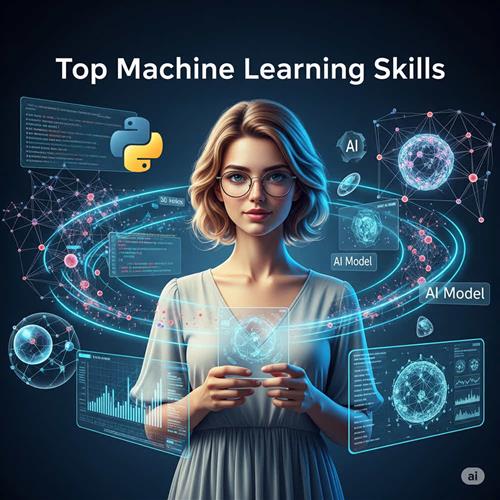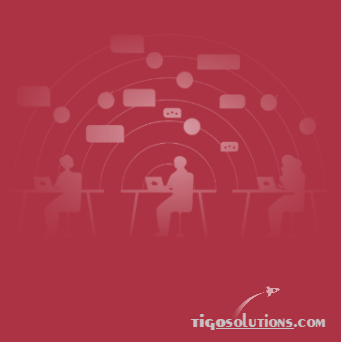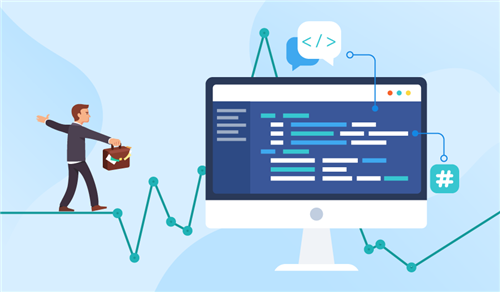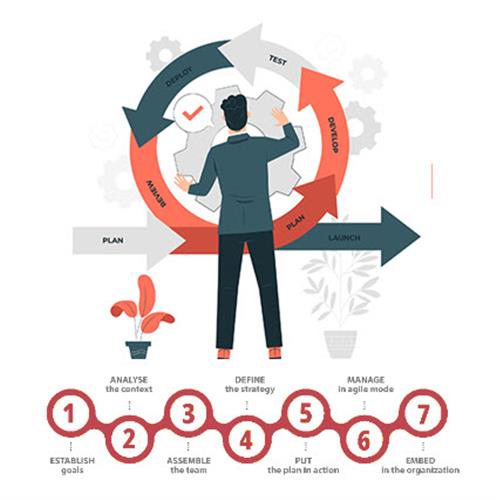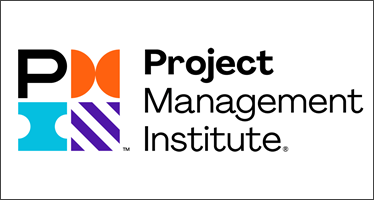What’s the difference between “attended” and “unattended” RPA bots?
Last updated: December 16, 2022 Read in fullscreen view
- 05 Jul 2020
 What is Sustaining Software Engineering? 819
What is Sustaining Software Engineering? 819 - 21 Dec 2023
 Top 12 Low-Code Platforms To Use in 2024 803
Top 12 Low-Code Platforms To Use in 2024 803 - 20 Mar 2022
 What is a Multi-Model Database? Pros and Cons? 751
What is a Multi-Model Database? Pros and Cons? 751 - 03 Jul 2022
 What is the difference between Project Proposal and Software Requirements Specification (SRS) in software engineering? 720
What is the difference between Project Proposal and Software Requirements Specification (SRS) in software engineering? 720 - 01 Oct 2020
 Fail fast, learn faster with Agile methodology 695
Fail fast, learn faster with Agile methodology 695 - 22 Sep 2022
 Why is it important to have a “single point of contact (SPoC)” on an IT project? 596
Why is it important to have a “single point of contact (SPoC)” on an IT project? 596 - 19 Oct 2021
 Software development life cycles 584
Software development life cycles 584 - 14 Oct 2021
 Advantages and Disadvantages of Time and Material Contract (T&M) 577
Advantages and Disadvantages of Time and Material Contract (T&M) 577 - 19 Oct 2021
 Is gold plating good or bad in project management? 521
Is gold plating good or bad in project management? 521 - 18 Oct 2020
 How to use the "Knowns" and "Unknowns" technique to manage assumptions 494
How to use the "Knowns" and "Unknowns" technique to manage assumptions 494 - 01 May 2023
 Understanding Business as Usual (BAU) and How to Transition 487
Understanding Business as Usual (BAU) and How to Transition 487 - 08 Oct 2022
 KPI - The New Leadership 444
KPI - The New Leadership 444 - 28 Jul 2022
 POC, Prototypes, Pilots and MVP: What's the differences? 421
POC, Prototypes, Pilots and MVP: What's the differences? 421 - 30 Jan 2022
 What Does a Sustaining Engineer Do? 365
What Does a Sustaining Engineer Do? 365 - 18 Jul 2021
 How To Ramp Up An Offshore Software Development Team Quickly 361
How To Ramp Up An Offshore Software Development Team Quickly 361 - 12 Oct 2022
 14 Common Reasons Software Projects Fail (And How To Avoid Them) 348
14 Common Reasons Software Projects Fail (And How To Avoid Them) 348 - 23 Sep 2021
 INFOGRAPHIC: Top 9 Software Outsourcing Mistakes 300
INFOGRAPHIC: Top 9 Software Outsourcing Mistakes 300 - 28 Oct 2022
 Build Operate Transfer (B.O.T) Model in Software Outsourcing 290
Build Operate Transfer (B.O.T) Model in Software Outsourcing 290 - 13 Nov 2021
 What Is Bleeding Edge Technology? Are bleeding edge technologies cheaper? 287
What Is Bleeding Edge Technology? Are bleeding edge technologies cheaper? 287 - 13 Oct 2021
 Outsourcing Software Development: MVP, Proof of Concept (POC) and Prototyping. Which is better? 279
Outsourcing Software Development: MVP, Proof of Concept (POC) and Prototyping. Which is better? 279 - 16 Sep 2022
 Examples Of Augmented Intelligence In Today’s Workplaces Shaping the Business as Usual 273
Examples Of Augmented Intelligence In Today’s Workplaces Shaping the Business as Usual 273 - 05 Mar 2021
 How do you minimize risks when you outsource software development? 270
How do you minimize risks when you outsource software development? 270 - 12 Dec 2021
 Zero Sum Games Agile vs. Waterfall Project Management Methods 254
Zero Sum Games Agile vs. Waterfall Project Management Methods 254 - 10 Dec 2023
 Pain points of User Acceptance Testing (UAT) 254
Pain points of User Acceptance Testing (UAT) 254 - 28 Dec 2021
 8 types of pricing models in software development outsourcing 252
8 types of pricing models in software development outsourcing 252 - 19 Apr 2021
 7 Most Common Time-Wasters For Software Development 250
7 Most Common Time-Wasters For Software Development 250 - 29 Nov 2021
 Memorandum of Understanding (MOU) for Partnership Agreements 244
Memorandum of Understanding (MOU) for Partnership Agreements 244 - 11 Jan 2024
 What are the Benefits and Limitations of Augmented Intelligence? 241
What are the Benefits and Limitations of Augmented Intelligence? 241 - 13 Dec 2020
 Move fast, fail fast, fail-safe 237
Move fast, fail fast, fail-safe 237 - 31 Oct 2021
 Tips to Fail Fast With Outsourcing 228
Tips to Fail Fast With Outsourcing 228 - 11 Oct 2022
 Why choose Billable Viable Product (BVP) over Minimum Viable Product (MVP) 228
Why choose Billable Viable Product (BVP) over Minimum Viable Product (MVP) 228 - 05 Oct 2021
 Shiny Object Syndrome: Why Your Business Isn't "Going Digital" 226
Shiny Object Syndrome: Why Your Business Isn't "Going Digital" 226 - 01 Mar 2023
 What is Unit Testing? Pros and cons of Unit Testing? 217
What is Unit Testing? Pros and cons of Unit Testing? 217 - 06 Feb 2021
 Why fail fast and learn fast? 217
Why fail fast and learn fast? 217 - 04 Oct 2021
 Product Validation: The Key to Developing the Best Product Possible 198
Product Validation: The Key to Developing the Best Product Possible 198 - 06 Nov 2019
 How to Access Software Project Size? 192
How to Access Software Project Size? 192 - 04 Oct 2022
 Which ERP implementation strategy is right for your business? 188
Which ERP implementation strategy is right for your business? 188 - 25 Apr 2021
 What is outstaffing? 187
What is outstaffing? 187 - 18 Aug 2022
 What are the consequences of poor requirements with software development projects? 183
What are the consequences of poor requirements with software development projects? 183 - 31 Dec 2022
 The New Normal for Software Development 177
The New Normal for Software Development 177 - 27 Jul 2024
 Positive Psychology in the Digital Age: Future Directions and Technologies 174
Positive Psychology in the Digital Age: Future Directions and Technologies 174 - 31 Aug 2022
 What are the best practices for software contract negotiations? 166
What are the best practices for software contract negotiations? 166 - 10 Nov 2022
 Poor Code Indicators and How to Improve Your Code? 164
Poor Code Indicators and How to Improve Your Code? 164 - 16 Aug 2022
 What is a Headless CMS? 163
What is a Headless CMS? 163 - 20 Dec 2021
 What is Hybrid Mobile App Development? 157
What is Hybrid Mobile App Development? 157 - 19 Dec 2023
 How AI is Transforming Software Development? 155
How AI is Transforming Software Development? 155 - 26 Dec 2023
 Improving Meeting Effectiveness Through the Six Thinking Hats 136
Improving Meeting Effectiveness Through the Six Thinking Hats 136 - 10 Apr 2022
 What is predictive analytics? Why it matters? 134
What is predictive analytics? Why it matters? 134 - 17 Feb 2022
 Prioritizing Software Requirements with Kano Analysis 129
Prioritizing Software Requirements with Kano Analysis 129 - 01 Mar 2023
 Bug Prioritization - What are the 5 levels of priority? 129
Bug Prioritization - What are the 5 levels of priority? 129 - 31 Dec 2021
 What is a Data Pipeline? 118
What is a Data Pipeline? 118 - 18 Jan 2024
 Self-healing code is the future of software development 117
Self-healing code is the future of software development 117 - 10 Sep 2024
 AI in Email Marketing: Personalization and Automation 111
AI in Email Marketing: Personalization and Automation 111 - 05 Sep 2023
 The Cold Start Problem: How to Start and Scale Network Effects 107
The Cold Start Problem: How to Start and Scale Network Effects 107 - 03 Nov 2023
 Why Is Billable Viable Product An Alternative To Minimum Viable Product? 107
Why Is Billable Viable Product An Alternative To Minimum Viable Product? 107 - 01 May 2024
 Warren Buffett’s Golden Rule for Digital Transformation: Avoiding Tech Overload 107
Warren Buffett’s Golden Rule for Digital Transformation: Avoiding Tech Overload 107 - 03 May 2024
 The Iceberg of Ignorance 105
The Iceberg of Ignorance 105 - 02 Dec 2024
 The Intersection of AI and Business Analytics: Key Concepts to Master in Your Business Analytics Course 105
The Intersection of AI and Business Analytics: Key Concepts to Master in Your Business Analytics Course 105 - 31 Dec 2022
 Future of Software Development Trends and Predictions for 2023 100
Future of Software Development Trends and Predictions for 2023 100 - 05 Jan 2024
 Easy ASANA tips & tricks for you and your team 93
Easy ASANA tips & tricks for you and your team 93 - 31 Dec 2023
 Software Development Outsourcing Trends to Watch Out for in 2024 88
Software Development Outsourcing Trends to Watch Out for in 2024 88 - 07 Nov 2022
 Why Design Thinking can save the outsourcing industry 88
Why Design Thinking can save the outsourcing industry 88 - 25 Sep 2024
 Enhancing Decision-Making Skills with an MBA: Data-Driven Approaches for Business Growth 84
Enhancing Decision-Making Skills with an MBA: Data-Driven Approaches for Business Growth 84 - 06 Mar 2024
 [SemRush] What Are LSI Keywords & Why They Don‘t Matter 84
[SemRush] What Are LSI Keywords & Why They Don‘t Matter 84 - 18 Jul 2024
 The 8 Best ways to Innovate your SAAS Business Model in 2024 80
The 8 Best ways to Innovate your SAAS Business Model in 2024 80 - 27 Feb 2025
 How AI Agents are Changing Software Development? 80
How AI Agents are Changing Software Development? 80 - 03 Jan 2024
 Why Partnership is important for Growth? 79
Why Partnership is important for Growth? 79 - 01 Dec 2023
 Laws of Project Management 76
Laws of Project Management 76 - 30 Jul 2024
 The Future of IT Consulting: Trends and Opportunities 71
The Future of IT Consulting: Trends and Opportunities 71 - 18 Aug 2024
 The Future of Web Development: Emerging Trends and Technologies Every Developer Should Know 69
The Future of Web Development: Emerging Trends and Technologies Every Developer Should Know 69 - 10 Sep 2024
 Leading Remote Teams in Hybrid Work Environments 64
Leading Remote Teams in Hybrid Work Environments 64 - 12 Mar 2024
 How do you create FOMO in software prospects? 63
How do you create FOMO in software prospects? 63 - 22 Nov 2024
 The Role of AI in Enhancing Business Efficiency and Decision-Making 61
The Role of AI in Enhancing Business Efficiency and Decision-Making 61 - 06 Dec 2024
 Steps For Integrating Sustainable Practices Into Business Operations 58
Steps For Integrating Sustainable Practices Into Business Operations 58 - 09 Oct 2024
 Short-Form Video Advertising: The Secret to Captivating Your Audience 51
Short-Form Video Advertising: The Secret to Captivating Your Audience 51 - 14 Mar 2024
 Why should you opt for software localization from a professional agency? 51
Why should you opt for software localization from a professional agency? 51 - 12 Aug 2024
 Understanding Google Analytics in Mumbai: A Beginner's Guide 37
Understanding Google Analytics in Mumbai: A Beginner's Guide 37 - 25 Jan 2025
 The Decline of Traditional SaaS and the Rise of AI-first Applications 26
The Decline of Traditional SaaS and the Rise of AI-first Applications 26 - 20 Feb 2025
 How Machine Learning is Shaping the Future of Digital Advertising 15
How Machine Learning is Shaping the Future of Digital Advertising 15
Robotic Process Automation continues to receive a lot of attention. Enterprises are embracing RPA to automate front-office and back-office tasks across a variety of industries.
Whatever the industry, the applications of RPA are boundless. RPA is used to create a digital workforce to automate repetitive tasks, maximizing knowledge workers’ productivity by enabling them to focus on higher-value activities. RPA is used to create software bots that mimic humans, interacting with multiple software applications to execute tasks at the user interface level. It is able to do this without changing the existing applications.
Attended versus unattended RPA bots
RPA bots can work in both “attended” and “unattended” modes. Typically targeted toward front-office activities, attended bots are useful when the entire end-to-end process can’t be automated. RPA bots can work alongside humans to deliver attended automation. In such cases, the actions of RPA bots can still be triggered by system-level events that can give and take data to and from human workers.
Unattended RPA bots execute tasks and interact with applications independent of human involvement. Unattended bots can be triggered by events and they can be scheduled.
A call center agent can get help from an attended RPA bot in near real time during a live customer call. For example, the attended bot can find customer data from one application and automatically type it into a second application. This way, the call center agent spends less time switching between applications and can focus on high-value tasks such as solving the customer’s problem.
Unattended bots typically perform batch operations that do not require user intervention. For example, a batch of new client information is received in a spreadsheet and needs to be entered into multiple applications.
What type of RPA is right for my business?
If you’re wondering which type of RPA is right for your business, we’ve got great news—you don’t need to choose. Both attended and unattended bots play an important role in an RPA deployment.
Working together
Attended and unattended RPA bots are not mutually exclusive. They both play an important role in an RPA deployment.
Attended bots optimize tasks by offloading portions of them, helping work get done faster. Unattended bots execute tasks and interact with applications independent of human involvement. The combination of attended and unattended RPA provides for a complete RPA solution.






